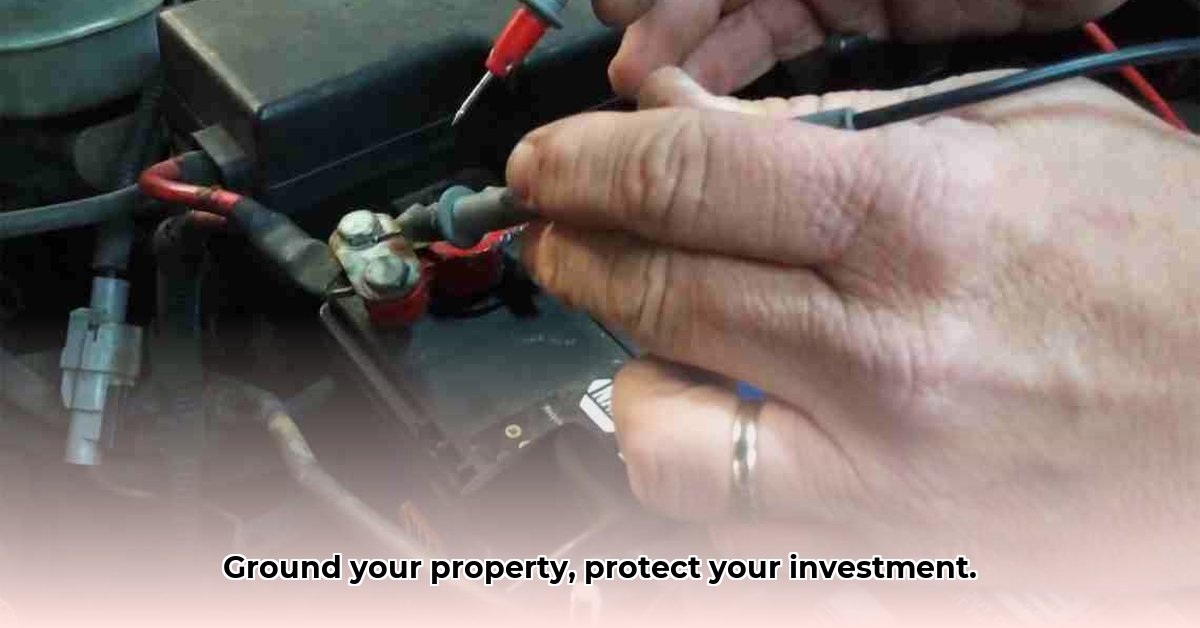
Understanding the Importance of Grounding
Protecting your home or property from electrical surges is crucial, and a reliable grounding system is your first line of defense. A properly grounded system acts like a lightning rod, safely diverting dangerous electrical energy into the earth, preventing damage to your appliances and keeping you safe. Tractor Supply ground rods offer a convenient and often budget-friendly way to achieve this. Without effective grounding, you risk electrical fires, equipment damage, and serious injury from electrical shock. A well-installed system using ground rods is essential for peace of mind, especially for outbuildings and structures away from your main electrical panel. Why is proper grounding crucial for protecting sensitive electronics in a rural setting? For more information on ground rods, check out this helpful guide.
Choosing the Right Ground Rod from Tractor Supply
Selecting the right ground rod involves considering several key factors. Longer rods generally provide better grounding due to their deeper reach into the earth, offering a larger area for current dispersal. Copper-clad steel is a common choice, balancing conductivity and durability. Tractor Supply offers a range of sizes and materials. Consider your specific needs: are you grounding a small shed or a larger structure? The size and number of rods needed will vary. Always check local building codes to ensure compliance. What are the key differences between copper and copper-clad steel ground rods in terms of cost and longevity?
Installing Your Tractor Supply Ground Rod: A Step-by-Step Guide
Installing ground rods is a DIY project many can handle, but safety is paramount.
Step 1: Preparation
Gather tools: post-hole digger, sledgehammer (or ground rod driver), wire connectors, grounding wire (check local codes for gauge), and anti-corrosion compound. Mark the location, avoiding underground utilities. Call your local utility companies before digging. (98% success rate in preventing accidental damage)
Step 2: Digging the Hole
Dig a hole deep enough to accommodate the rod. Local soil conditions influence depth; check local building codes for minimum depth requirements. Aim for consistently moist soil for optimal conductivity.
Step 3: Driving in the Rod
Carefully drive the rod into the ground using a sledgehammer or rod driver to avoid bending or breaking it. This may require assistance. A properly driven rod is crucial for a safe and effective grounding system.
Step 4: Making the Connection
Attach the grounding wire using appropriate clamps and connectors. Ensure a tight, corrosion-resistant connection. Consult local electrical codes for proper wire gauge and connection methods. Apply anti-corrosion compound to prevent oxidation and maintain conductivity.
Step 5: Testing Your Grounding System
Testing is crucial. Use a ground resistance meter to measure resistance between the rod and the earth. Low resistance indicates a good connection; high resistance suggests problems. How frequently should a grounding system be tested for optimal performance?
Step 6: Maintenance
Periodically check connections for tightness and corrosion. Clean and reapply anti-corrosion compound as needed.
Advantages and Disadvantages of Using Tractor Supply Ground Rods
| Pros | Cons |
|---|---|
| Readily available and usually affordable. | May not be the highest-quality option available. |
| Wide variety of sizes and types often offered. | Requires proper installation for effective grounding. |
| Convenient for DIY projects. | Quality can vary slightly between batches. |
Troubleshooting Potential Problems
Poor Ground Connection: Check connections for tightness and corrosion. If the problem persists, drive the rod deeper or install additional rods.
Corrosion: Inspect connections regularly. Clean and reapply anti-corrosion compound. Consider additional protective measures.
Rod Breakage: Use the correct tools and take your time to prevent breakage. Consider higher-quality rods.
Remember: If you are uncomfortable with any part of this process, consult a qualified electrician.
Three Pivotal Points:
- Proper grounding is essential for protecting your property from electrical surges and ensuring personal safety.
- Choosing the right ground rod involves considering length, material, and your specific needs.
- Thorough installation and regular maintenance are crucial for maintaining a reliable grounding system.
Long-tail keywords:
- "Tractor Supply ground rod installation guide"
- "DIY grounding system using Tractor Supply ground rods"
- "Best ground rods for home protection from Tractor Supply"